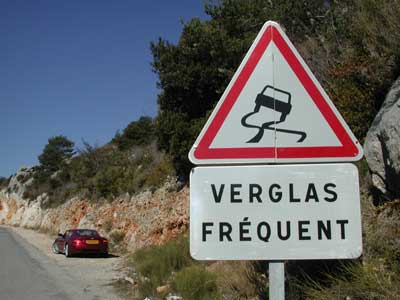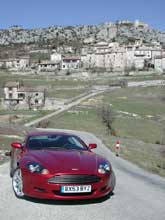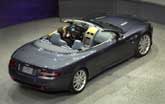Recent Articles
Popular Makes
Body Types
2005 Aston Martin DB9

Although the Aston Martin DB9 could be used solely as Point A-to-Point B transportation, doing so almost should not be allowed. It would just undermine the incredible aesthetic achievement that Aston has pulled off. The DB9 is a spectacular piece of work, both inside and out. Here, the term "vehicle" applies in a broader, more conceptual sense. That is, the lucky few who experience the DB9, aside from arriving at their physical destination, will also be transported to the narrow realm of unparalleled automotive execution.Aston Martin's design philosophy is simple: build a beautiful, elegant, and modern interpretation of a traditional sports car. In addition, make it a worthy successor to the DB7, Aston Martin's best selling vehicle ever. This British marque chose a somewhat minimalist approach with the new model, leaving off extraneous trim, hiding the front and rear bumpers, and extending the hood right to the front edge of the super car. To make it look like the DB9 was milled from a single piece of metal, Aston Martin has set the headlights into the front fenders and made the door handles flush. Curves appear everywhere - the roofline, the rear clip, the fender flares, the hood - and suggest "a supremely fit person," according to AM. They strove for this image over the hard, jagged, body-builder-type look. Aluminum 19-in. wheels and tires fill the fenders and maintain athletic proportion. Both Coupe and Convertible (called Volante) versions will be offered.
Features
The transition into the 2+2 cockpit has been paid special attention, as the doors are engineered to swing upward slightly when opened to ease occupant entry. Closing them takes advantage of gravity and the shutting process is gentler than if they were slammed conventionally. Once inside, occupants will find the DB9 just as dazzling as they did standing beside it. Twenty new leather colors are available to juxtapose against the wood trim in the center stack. Aston Martin employs large single pieces of wood rather than small strips, hoping they will appear more structural and furniture-like. Walnut, mahogany, and bamboo are offered, and each is finished will oil instead of high gloss. The oil provides a natural, fit appearance favorable to the plastic, artificial look produced by gloss. Aluminum is used to accent the door handles, instrument cluster, and dashboard. A special feature is the glass starter button, in the top row of the center stack. Rather than using a plastic button, Aston Martin etched its logo into a clear glass one. While the engine is running the button glows red, and while off a light blue. The main instrument cluster is another innovation, and uses organic electroluminescent displays instead of regular LCDs. Comparatively; OELs are easier to read, especially at an angle. Optional interior features include cruise control, seat heaters, navigation, tire pressure monitoring, and park distance sensors. Cupholders are available as an accessory, as well.

Engine
A crimson starter button indicates that the 6-liter V12 is spinning. That 48-valve mill was developed from the Vanquish's existing 12-cylinder. New parts include four camshafts, both the intake and exhaust manifold, the crankshaft, and the engine management system. An impressive 450 hp. boils at 6,000 rpm while 420 lb.-ft. of torque twists at 5,000 revs. That's a lot of revolution for maximum torque, but Aston says that 80 percent is queued up at just 1,500 rpm. By locating the powerplant in a mid-front location, weight distribution is an equal 50:50.Aston Martin will bolt one of two transmissions to each V12 engine. A traditional 6-speed manual uses a twin-plate clutch, and a 6-speed automatic gets shift-by-wire gear changing. Rather than using a conventional lever to pick a drive mode, different buttons engage park, reverse, drive, or neutral. Manual shifting via paddles behind the steering wheel can also be activated on the automatic box. In the interest of ultimate handling performance, a frame made primarily of aluminum was used to underpin the DB9. Although 25-percent lighter than the DB7's bodyshell, the new frame is said to be twice as stiff torsionally. Ultrasonic welding is used in place of normal spot welding and is approximately 90-percent stronger. Even the driveshaft is made of carbon fiber to make the transfer of power to the rear wheels as rigid as possible. Body parts are constructed of both aluminum and composite.

Suspension
Fully-independent suspension used double-wishbone configurations and, again, the components are fabricated from aluminum. The steering rack is mounted ahead of the front wheels to increase performance, especially under hard braking. Four-piston calipers bind 14-in. rotors in front and 13s out back. Those discs are not cross-drilled, but instead ventilated and grooved. Additionally, ABS, Electronic Brakeforce Distribution, and Brake Assist provide electronic assistance. Ultimate stopping power relies on 19-in. tires, measuring 235/40 at the bow and 275/35 towards the stern.
If the unthinkable occurs, and the seamlessly designed DB9 body acquires crumples, airbags assure occupant safety. Dual-stage units emerge in front of the driver and front passenger, while seat-mounted ones provide lateral buffering. The seatbelts also include pretensioners. Volante models deploy roll-hoops from the rear seat headrests in the event of a rollover. The A-pillars are also built to support twice the weight of a DB9.So what do you get when you combine the latest and best structural technology, a potent but refined powertrain, a quirky yet extravagant cockpit, and one the most unencumbered body designs ever? You get the all-new DB9. Coupe versions will be available in the spring and Volante versions in the fall. Nearly all of the 2,000 being produced for this model year are spoken for.

Frequently Asked Questions
Where is the new DB9 built, when does it go on sale, and how many does Aston Martin plant to build this year? The successor to the DB7, the DB9 is the first vehicle to be built at Aston Martin's new high-tech Gaydon manufacturing facility in Warwickshire, England, the first purpose-built factory in its 90 year history. While technical facilities at Gaydon are far superior to any previous Aston Martin site, the new model is still mostly hand built-it takes close to 200 man-hours to build each car, which Aston Martin says is about three times the time needed to assemble a 'mass produced' sports or GT car. AM achieved its greatest sales success ever during 2003, when the luxury marque sold 2,000 cars. The super sports car company expects to sell 1,600 to 1,800 DB9s this model year, nearly 800 of which are ordered already in North America, AM's largest market. The Coupe will be available in the spring of 2004 and the Volante (expected to be 50 percent of sales) in the fall.If the DB9 is the replacement for the DB7, then why isn't it called the DB8? Although the newest "DB" model replaces the styling and engineering icon, the DB7, it is such a significant leap forward that AM decided to name it appropriately. Also, the company wanted to avoid any confusion that the V12 could be an 8-cylinder model. (An eight cylinder version, 2-seater version of the DB9 is likely to follow next year, however.) The Coupe was unveiled at the Frankfurt Motor Show in September 2003 and the Volante was revealed at the North American International Auto Show in January, 2004, The DB9 Volante is the 13th convertible from the company, joining a highly line-up of post-war convertibles that stretches back to the DB2 of 1950 and includes the DB4, DB5, DB6, V8 and DB7. It will be the first convertible ever to use Aston Martin's unique VH Platform (Vertical/Horizontal) Strategy.

Frequently Asked Questions (cont.)
Where does the name Aston Martin come from and the designation of DB, for its super sports car? Aston Martin began as a company to make cars for hillclimbing and racing, in 1913, by Robert Banford and Lionel Martin (hence the Martin) and was a success at the Aston Hill Climb the following year (therefore Aston). David Brown, who had previously made tractors and farm equipment, bought Aston Martin Motors in the late forties. The first DB model, the DB2, was named after him and went on to place 1st, 2nd, and 3rd in the 3-liter class of the 1952 LeMans race. What makes this modern version of a traditional sports car so special? So many things we can only name a few. For starters, its elegant exterior, that looks like it's milled out of one piece of sheetmetal (if you think hand-built craftsmanship doesn't show-think again!); its luxury interior (20 new leather choices and a selection of walnut, mahogany and bamboo wood trims); and its cadre of modern technologies (see safety features and traction aids, for instance) and luxury accoutrements (in addition to heated seats and heated windshield, our favorite was the glass starter button that glows red when pushed to start and then turns blue).How does it drive? We felt like super star James Bond when we drove the big -screen car icon at chase speeds (Bond made the supercar famous in Goldfinger), and a super Mom in a mobile spa, when we motored at cruising speeds through the foothills of the French Alps on the first press drive of the Aston Martin DB9. During our 250 mile-long excursion that took us from the town of Vence, perched on a hillside overlooking the Cote D'Azur, through small villages and rural countryside on narrow and winding roadways, as well as on a high-speed motorway, we were always aware of the incredible, throaty V12 power available to us, with just a slight blip of the throttle (great torque available throughout the rpm range; performance stats include a zero to 60 of 4.9 seconds; a zero to 100 time of 10.5 seconds; an impressive 50 to 70mph time of 2.3 seconds, and a top speed of 186 mph.). We also felt like we had life insurance with the supersized cast iron Brembo brakes designed to modulate the DB9's power. But what's really at the heart of this sports car is its aerodynamics and lightweight aluminum design, with a 50/50 weight balance, and its performance-benefiting, power-to-weight ratio (a manual gearbox weighs 3769 lbs.--an auto is 3,880--compared to a Bentley GT, which weighs in at 5, 070 lbs. or an SL55 AMG, at 4,310.) Great gearing is also to be had with the auto transmission, that comes with paddles on the steering wheel that make changing gears an easy pleasure. And, although we were unaware of its presence, we were also happy to have the technological advantage of AM's first use of stability control under the DB9.